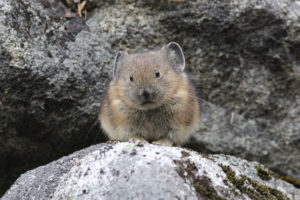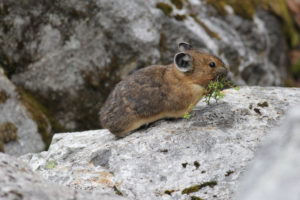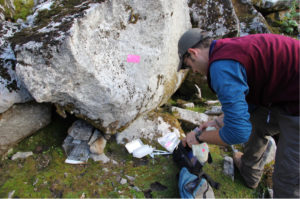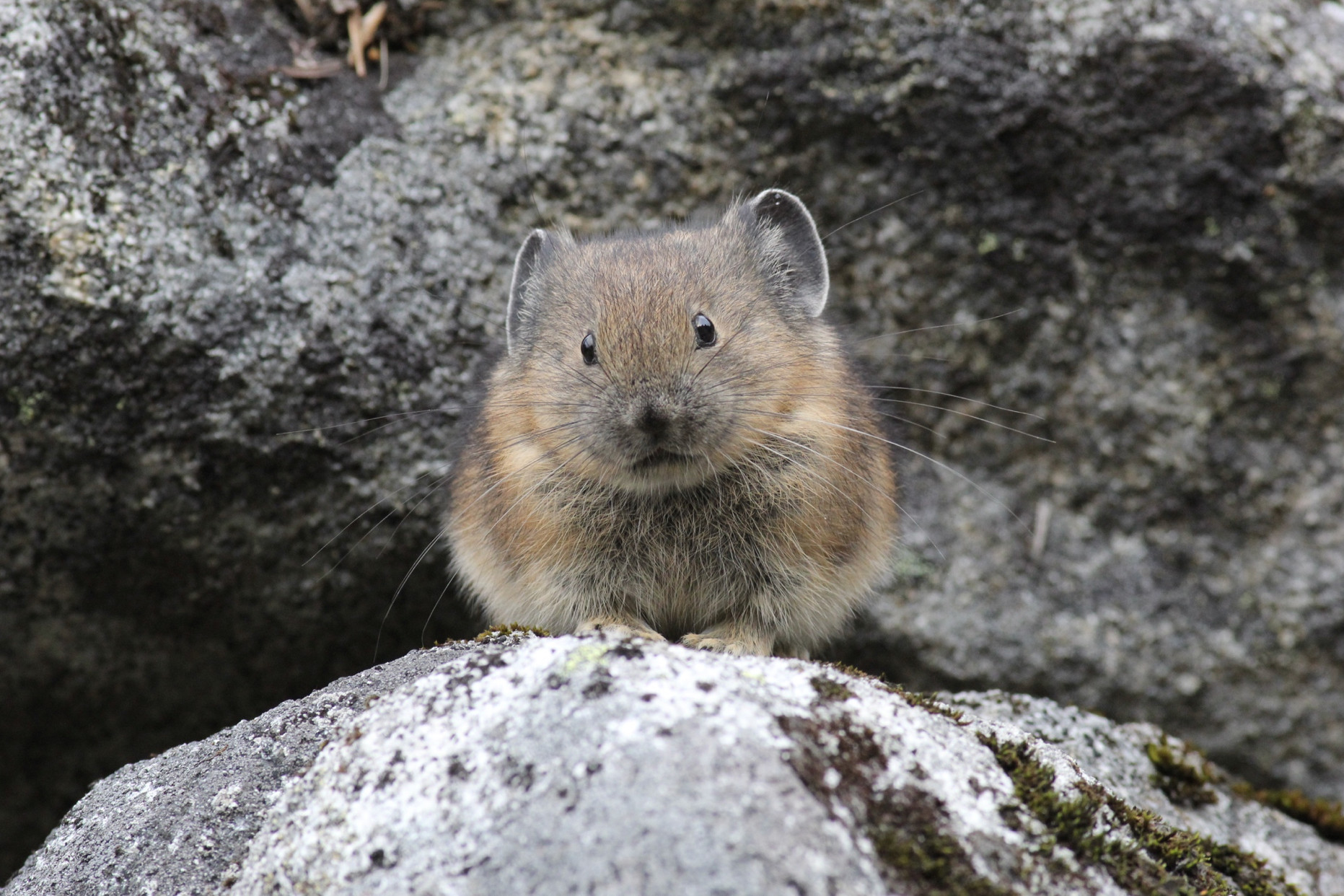In my previous position as a postdoctoral fellowship in Canada, I helped a friend of mine Matt Waterhouse, during his PhD work catching (possibly) the cutest animals in the world up mountains. I also helped out a bit in the lab and with the analyses. He has just published the research in the top international journal Molecular Ecology, and his research has implications for the future of the species in light of a changing climate.

Figure 1 A pika giving its most threatening expression
Pika (Ochotona princeps) are small, nearly spherical relatives of rabbits, that live in the mountains. They are territorial, and squeak at you when you enter their territory with a sound akin to a little squeaky toy being sat on. It is dramatically unthreatening to be squeaked at by a little rabbit-like creature puffed up like a furry ball, but they think they are the gangsters of the mountains. Among their wonderful behaviours are that they gather vegetation and flowers and build haystacks in their little caves as food for the winter – as you can see below.

Figure 2 Pika gathering food for its haystack
Unfortunately, they may also be the first mammal to go extinct due to climate change.
Pika live in the mountains in the full alpine zone among boulder fields. Accordingly, they are cold adapted and temperature sensitive, and their homes in the crevasses between boulders are often covered in snow for most of winter. With a warming climate they therefore need to go up the mountain to stay in their habitable zone, however mountains have tops, and once it gets warm enough then they will need to live in the space above the mountain – which isn’t easy to do for an animal that can’t fly. In truth this is an over simplification, climate change has many effects, and many of these effects are not great for pika. A warming climate may mean decreased snow, which actually can mean their homes get too cold in winter – because without snow as an insulator it gets very cold indeed in their little caves.
What Matt did in his PhD was climb transects up the sides of mountains, catching pika at different altitudes and obtaining small genetic samples from each (from hair primarily, but also little clips off the top of the ears). This means that the pika remained unharmed and were released back into their caves. I came up the mountains with him, catching pika and carrying gear and fighting off bears (yes really, there were bears that I had to fight off to get my fair share of the blueberries).

Figure 3 Me contemplating the abyss that is climate change
He then processed these genetic samples to look for variation within the population. A SNP (pronounced snip) is a variable site in the genome, where you can have say an A or a T, or a C or a G. Matt created a dataset with ~31,000 SNPs in it to describe the genetic variation of these pika, and then looked for SNPs that were correlated to altitude. He found a number of sites on the genome linked with altitude, often near genes associated with metabolism and oxygen transport. The same sorts of patterns are found in humans, where Tibetans are adapted to live at high altitude while most people are not. For the pika, there are genetic variants that enable them to live at various altitudes – and these genes vary over very small distances.
He also used migration models (derived from the genetic data) to assess movement and immigration within the pika populations, finding primarily dispersal down the mountains.
All of these findings have important consequences for the adaptation and future of pika. Genetic variants for each altitude may be lost as their range contracts and habitats change, removing the adaptive potential of the species. Currently source populations are higher on the mountain, but this may change in the future, and potentially the low habitat between mountains may become unsuitable for them to cross. Overall his results are not only important for understanding the evolution of pika, but also their conservation management in the future.
For my part I got to help out with an important study and play in the mountains. Email me on Andrew.j.veale@gmail.com if you can’t get a copy of the paper and I’ll send it along.

Figure 4 Me releasing a pika after taking a genetic sample

Figure 5 Matt weighing a pika in a bag
Contact
Dr Andrew Veale
aveale@unitec.ac.nz
